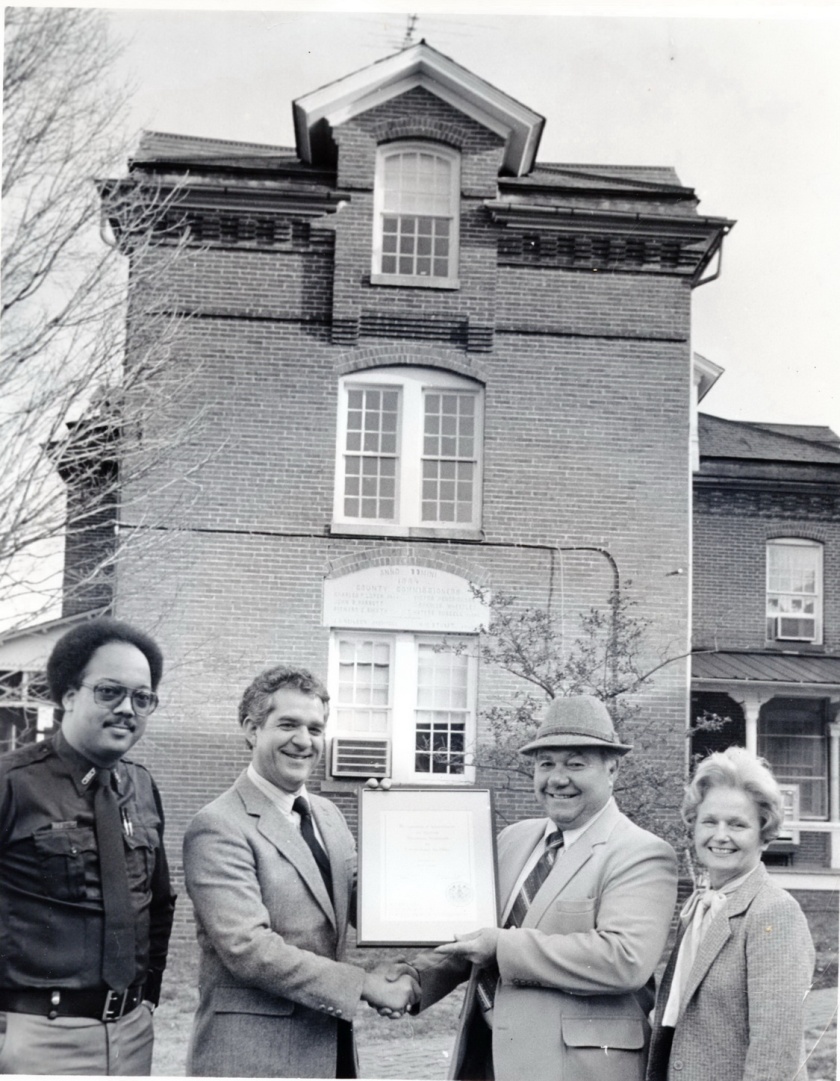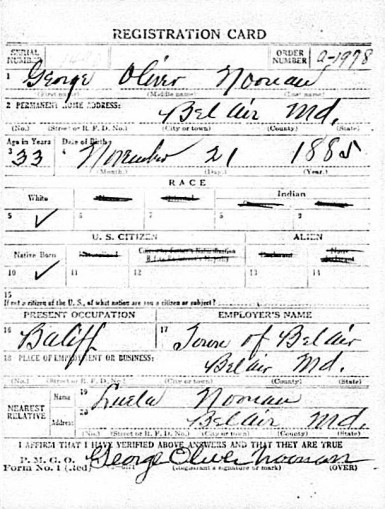
When 25-year-old LaMonte Cooke, a Philadelphian, joined the Kent County Sheriff’s Office in 1975, the entire seven-man force was white. “The day I interviewed for the deputy’s job with Sheriff Bartus Vickers, he had four questions for me. He wanted to know if I voted, what my party affiliation was, how well I got along with whites, and I forget the last one. I must have answered them correctly, for he told me to report to work the next day.”
“That next morning, my first day in law enforcement, the sheriff allowed me to borrow one of his revolvers since, in those days, you bought your own weapon. That was my first gun. For orientation, one of the deputies took me out on the road and showed me around the county. Here I was, a man who’d never given a thought about this type of work, policing Kent County.”
Patrolling Kent County
Once he began patrolling as a deputy, he regularly turned heads from people surprised to see an African-American in a Kent County Sheriff’s uniform. The city guy was much more comfortable with the ways of Philadelphia than the cornfields and waterways of a county with 16,000 people.
While he learned on the job in Maryland’s smallest county, members of the force and community gradually became accustomed to seeing him on the job. “Responding to a call once in an outlying area, I rang the doorbell of a house. When the lady answered and saw me in uniform, with a patrol car sitting behind me, she was so surprised that she telephoned the sheriff to confirm that I was one of his officers before she’d talk to me.”
One particular night, while out handling a complaint, teenagers smashed watermelons around Cooke’s usual parking spot, a place for watching the traffic flow up and down the main road through the county, Route 213. When his fellow officers heard about it, “they wrote up those kids for every infraction they could find,” he says. “After that, this sort of stuff stopped, and I knew I had been accepted professionally.
Over the next twelve years, he rose through the ranks. As a college-educated officer, he was naturally suited for the increasing administrative duties of running a department since minimum requirements were being put in place for jails and police agencies. He first worked to bring an outdated old building constructed in the 1880s into compliance and became the first local facility in the state to reach full compliance. As a result of his handling of several challenging management assignments, Sheriff Blizzard promoted him to Chief Deputy.
May Day Celebration at Washington College

Cooke recalls a little mayhem that occurred at Washington College. It was during an annual student liberating tradition, a fling for International Workers Day. “On May Day, some students celebrated by streaking or making nude dashes across the campus and town. One year [1978], I got a call about undressed people running across the highway, and when I pulled up, I saw several of them. Most dashed off, but I caught one, a student nicknamed Miami, whom I put in the patrol car.”
“But 200 students quickly surrounded the vehicle chanting ‘free Miami.’ They wouldn’t let me move so there I sat with yelling people all around me. I radioed for backup, and it wasn’t too long before I saw all these bodies diving out of the way. Coming through the crowd was Chief Deputy Blizzard just swinging his nightstick, and the mob was just jumping out of the way. Once he opened a path, he yelled hit it. I did but they followed us to the jail. It was sort of tense with all these students surrounding the building, so we called for help from the State Police. Finally, the dean from the college came down to get the students to disperse.”
Queen Anne’s County Warden
“In 1987, Queen Anne’s County was closing its old, outdated jail and opening a modern Detention Center. I applied for the position of warden to run that agency. There were several highly qualified candidates with lots of corrections experience. But I went ahead and applied for the job since the pay was a lot more than I was making as Chief Deputy in Kent. I got the appointment, so my first task was to build the institution, which opened in 1988 with room for 80 inmates. About two years later, a modular addition added 24 more beds, which increased the county’s detention center to 104 beds.”
“In 2008, the county commissioners approved a new modular addition to accommodate a growing female inmate population and a more secure male dormitory unit. Completed in 2009, it increased the facility’s total inmate capacity to 148 beds. I also worked with a committee of several counties considering a regional corrections facility. ”
Reflecting on nearly forty years of wearing a badge, this professionally recognized trailblazer, who has been involved in modernizing law enforcement and corrections in two counties, says: “From the time when I started in Kent County, things have changed so much. When you went into the jail in those days, you pretty well knew everybody. Now, we have such transient populations, and we are faced with more mental health issues, an increasingly diverse population, gangs, and more hardened criminals.”
During his tenure, Cooke served on several boards and commissions, including president of the Maryland Correctional Administrators Association (twice), vice chairman of the Maryland Police and Correctional Training Commission, commissioner on the State Commission on Criminal Sentencing Policy, acting county administrator for Queen Anne’s County. He also served on the board of directors for Peoples Bank of Kent County and worked with other criminal justice agencies on legislative matters in Annapolis.
Warden LaMonte Cooke of the Queen Anne’s County Detention Center got his start in the old days when the Kent County Sheriff’s Department consisted of just a handful of deputies, a couple of patrol cars, and a century-old jail built for wrongdoers of another era. In 2008, three African Americans served in the the Sheriff’s Office, which had twenty-two sworn officers.








